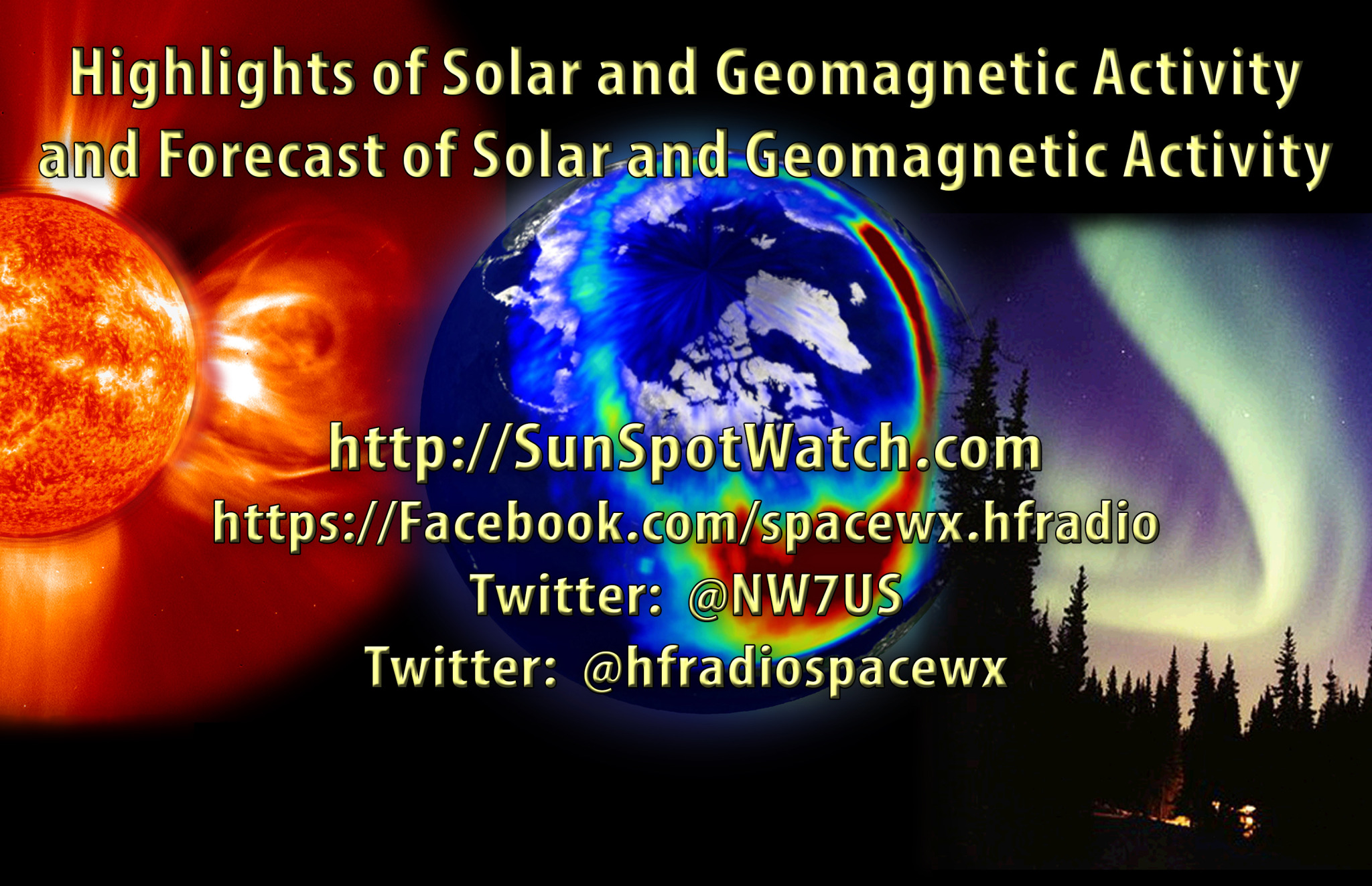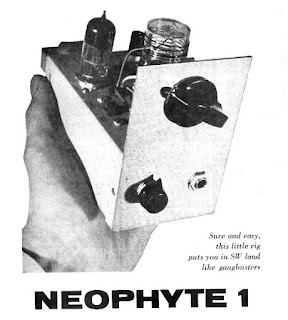 Hunting For NDBs In CLE258 – Pick Five!
Hunting For NDBs In CLE258 – Pick Five!

Next weekend's CLE is something a little different. Listeners are asked to pick five frequencies only, to listen on, and then find as many beacons as they can!
During these stressful times, CLE258 might provide some much needed distraction for you.
I'm sure most listeners will find their own strategy for picking their five frequencies. Will it be the five that have given you the most loggings? The five that have provided the most loggings in North America or Europe? Will it be the five that are not being bothered by your stronger pest signals? Choose wisely and enjoy the challenge.
From CLE coordinator Brian Keyte (G3SIA), comes the following CLE info:
-----------------------------------------------------------------------
- determine, worldwide, which beacons are actually in service and on-the-air so the online database can be kept up-to-date
- determine, worldwide, which beacons are out-of-service or have gone silent since the last CLE covering this range
- will indicate the state of propagation conditions at the various participant locations
- will give you an indication of how well your LF/MF receiving system is working
- give participants a fun yet challenging activity to keep their listening skills honed
The NDB List Group is a great place to learn more about the 'Art of NDB DXing' or to meet other listeners in your region. There is a lot of good information available there and new members are always very welcome. As well, you can follow the results of other CLE participants from night to night as propagation is always an active topic of discussion.
You need not be an NDB List member to participate in the CLEs and all reports, no matter how small, are of much value to the organizers.
Remember - 'First-time' logs are always VERY welcome!
Reports may be sent to the NDB List Group or e-mailed to CLE co-ordinator, Brian Keyte (G3SIA), whose address appears above. If you are a member of the group, all final results will also be e-mailed and posted there.
Please ... give the CLE a try ... then let us know what NDB's can be heard from your location! Your report can then be added to the worldwide database to help keep it up-to-date.
Have fun and good hunting!
Steve McDonald, VE7SL, is a regular contributor to AmateurRadio.com and writes from British Columbia, Canada. Contact him at [email protected].
 AmateurLogic 145: Saturday In The Park
AmateurLogic 145: Saturday In The Park
AmateurLogic.TV Episode 145 is now available for download.
We’ve got Summertime outdoor Ham Radio fun. Emile and friends at the W5SLA club do Field Day from a new location. Tommy’s unconventional Field Day. Join George, Tommy, and Ray for Saturday in the park with a great group of new portable antennas. Mike introduces the Grove Beginner Kit for Arduino. At this low price, even Emile is impressed.
1:14:58
George Thomas, W5JDX, is co-host of AmateurLogic.TV, an original amateur radio video program hosted by George Thomas (W5JDX), Tommy Martin (N5ZNO), Peter Berrett (VK3PB), and Emile Diodene (KE5QKR). Contact him at [email protected].
 Where have you gone G1KQH?
Where have you gone G1KQH?
Steve, G1KQH, is a regular contributor to AmateurRadio.com and writes from England. Contact him at [email protected].
 Yes we can make quality in the West
Yes we can make quality in the West
Simple functions, and LED tunnel display, but inserting a new 9V battery it sprung into life.
The best bit came when I read the back plate, yes it was made in the "United Kingdom".

This should give hope for us all in the West that we made quality products that last the test of time, and should prove production should return once again.
Steve, G1KQH, is a regular contributor to AmateurRadio.com and writes from England. Contact him at [email protected].
 2020 Colorado 14er Event
2020 Colorado 14er Event
 August 1 & 2, 2020
August 1 & 2, 2020
Saturday and Sunday
www.ham14er.org
Amateur Radio operators from around Colorado will be climbing many of Colorado’s 14,000-foot mountains and Summits On The Air (SOTA) peaks to set up amateur radio stations in an effort to communicate with other radio amateurs across the state and around the world. Join in on the fun during the 29th annual event and see how many of the mountaintop stations you can contact. The covers the entire weekend but many mountaintop activators will hit the trail early with the goal of being off the summits by noon due to lightning safety concerns.
The event includes all Summits On the Air (SOTA) summits, which adds over 1800 potential summits! If you aren’t up to climbing a 14er, there are many other summits to choose from with a wide range of difficulty. See the Colorado SOTA web page at w0c-sota.org
Radio operators who plan to activate a summit should post their intent on the ham14er group via the ham14er groups.io website. Also, be sure to check out the event information at http://www.ham14er.org
Frequencies used during the event
Activity can occur on any amateur band including HF and VHF. The 2m fm band plan uses a “primary frequency and move up” approach. The 2m fm primary frequency is 147.42 MHz. At the beginning of the event, operators should try calling on 147.42 MHz. As activity increases on that frequency, move on up the band using the 30 kHz steps. Don’t just hang out on 147.42 MHz…move up! The next standard simplex frequency up from 147.42 MHz is 147.45 MHz, followed by 147.48 and 147.51 MHz.
For a complete list of suggested HF, VHF and UHF frequencies see this web page.
Warning: Climbing mountains is inherently a dangerous activity.
Do not attempt this without proper training, equipment and preparation.
There is a lot more information available here: www.ham14er.org
Sponsored by The Colorado 14er Event Task Force
Also be aware that the SOCAL SOTAFEST is happening on the same weekend, which means there will be plenty of SOTA activity on the ham bands! See http://socalsota.com
The post 2020 Colorado 14er Event appeared first on The KØNR Radio Site.
Bob Witte, KØNR, is a regular contributor to AmateurRadio.com and writes from Colorado, USA. Contact him at [email protected].
 Weekly Propagation Summary – 2020 Jul 13 16:10 UTC
Weekly Propagation Summary – 2020 Jul 13 16:10 UTC
Here is this week’s space weather and geophysical report, issued 2020 Jul 13 0246 UTC.
Highlights of Solar and Geomagnetic Activity 06 – 12 July 2020
Solar activity was very low throughout the summary period. Region 2766 (N05, L=122, class/area Bxo/010 on 10 Jul) was the only spotted region and decayed to plage by 11 Jul.
A filament eruption near S29W18 produced a faint, slow-moving CME signature in LASCO/SOHO C2 imagery beginning at 09/0724 UTC. Analysis and modeling of the event suggested a possible glancing blow from the CME around 14 Jul.
No proton events were observed at geosynchronous orbit.
The greater than 2 MeV electron flux at geosynchronous orbit was at normal to moderate levels throughout the summary period.
Geomagnetic field activity was quiet. No significant periods of southward Bz were observed.
Forecast of Solar and Geomagnetic Activity 13 July – 08 August 2020
Solar activity is expected to be very low over the outlook period.
No proton events are expected at geosynchronous orbit.
The greater than 2 MeV electron flux at geosynchronous orbit is expected to continue at normal to moderate levels.
Geomagnetic field activity is expected to range from quiet to active levels. Unsettled conditions are likely on 13 Jul and 31 Jul – 01 Aug in response to coronal hole influence. Active conditions are likely on 14 Jul due to the anticipated arrival of a slow-moving transient that left the Sun on 09 Jul. The remainder of the outlook period is expected to be at quiet levels under a nominal solar wind environment.
Don’t forget to visit our live space weather and radio propagation web site, at: http://SunSpotWatch.com/
Live Aurora mapping is at http://aurora.sunspotwatch.com/
If you are on Twitter, please follow these two users: 1. https://Twitter.com/NW7US 2. https://Twitter.com/hfradiospacewx
– – – – – – – – – – – – –
Be sure to subscribe to our space weather and propagation email group, on Groups.io
https://groups.io/g/propagation-and-space-weather
Spread the word!
– – – – – – – – – – – – –
Links of interest:
+ Amazon space weather books: http://g.nw7us.us/fbssw-aSWSC
+ https://Twitter.com/NW7US
+ https://Twitter.com/hfradiospacewx
Space Weather and Ham Radio YouTube Channel News:
I am working on launching a YouTube channel overhaul, that includes series of videos about space weather, radio signal propagation, and more.
Additionally, I am working on improving the educational efforts via the email, Facebook, YouTube, Tumblr, and other activities.
You can help!
Please consider becoming a Patron of these space weather and radio communications services, beginning with the YouTube channel:
https://www.patreon.com/NW7US
The YouTube channel:
https://YouTube.com/NW7US
..
Visit, subscribe: NW7US Radio Communications and Propagation YouTube Channel
 NEOPHYTE Adventures
NEOPHYTE Adventures
I've just added a new page to my website, The VE7SL Radio Notebook, that describes my NEOPHYTE 1 regenerative receiver spring construction project. The new page can be found here.
Like most simple regens, its performance far exceeds its simple circuit expectations. My listening adventures with it continue during The Radio Board's annual Homebrew DX Contest which runs from July 11 - 24th. You may want to give it a try, after of course, you've checked-out my new web page!
Steve McDonald, VE7SL, is a regular contributor to AmateurRadio.com and writes from British Columbia, Canada. Contact him at [email protected].


















